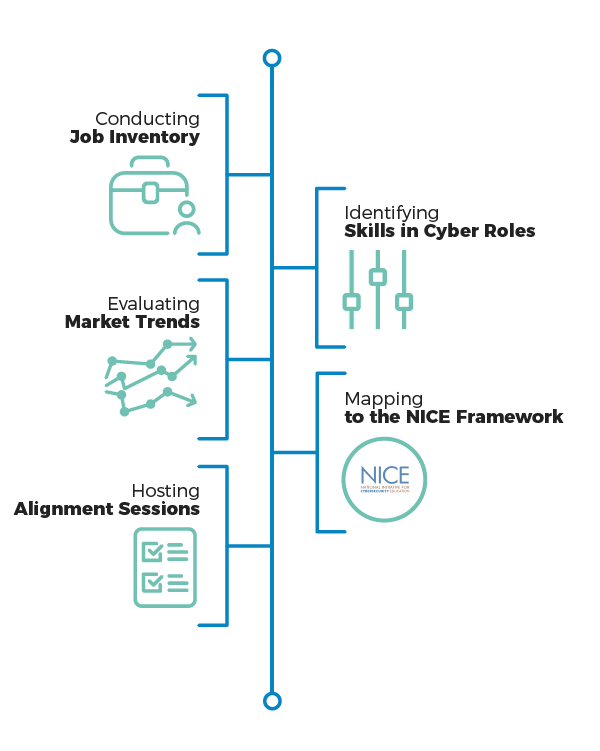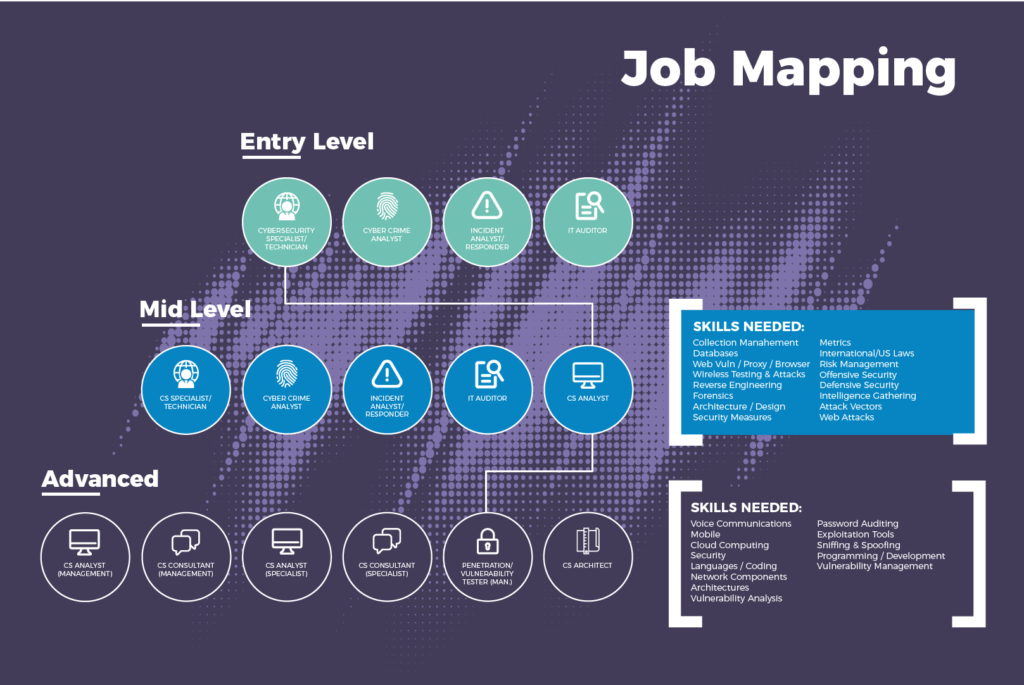Case Study
Role & Skill Mapping of 400+ Workforce for Fortune 100 Tech Company
The Challenge
At a Fortune 100 technology company, the leadership team of the cybersecurity department was reevaluating their talent development strategy for current and future employees. With more than 400 current practitioners and plans to hire an additional 150 employees, leadership was determined to find a solution to address the following priorities:
- Create clear cybersecurity career pathways
- Better define job roles and categorize job families
- Improve acquisition and onboarding of qualified talent
Organization
Name withheld, Fortune 100 Technology Organization
Year
2018
Services
Role Defining & Mapping
Workforce Development
Custom Training Configuration
Knowledge Assessment
Case Study
The Solution
Leadership wanted a workforce development framework based on data—current roles, accurate job families, and mobility within career paths. The client partnered with N2K to help mobilize their new workforce plan from the ground up, beginning with an assessment of the company’s entire cybersecurity department. This was accomplished by:
-
- Conducting a job inventory. The organization worked with N2K to review its 400 existing cybersecurity jobs. They were planning a restructure and wanted to determine the best way to prioritize updating current roles and future hiring initiatives. Many of the job descriptions were written a decade ago, so they also updated them along with job responsibilities.
- Identifying skills in cyber job roles. The organization and N2K interviewed stakeholders across various cyber business units to conduct a thorough analysis of the job roles. N2K used the feedback from this process to understand the nuances of the different roles and recategorize them into more functional job families accordingly.
- Evaluating market trends. The company evaluated the market landscape, trends, and future job hierarchies to help inform hiring and onboarding strategies for the next generation of cyber talent. A thorough analysis of where the market was headed also allowed them to provide solutions for training and career development.
- Mapping to the NICE Framework. The company worked to identify, aggregate, and audit all cybersecurity job roles and responsibilities to ensure accuracy and relevance in accordance with the NICE Framework. This allowed a clearer roadmap for job requirements and critical skills.
- Hosting alignment sessions with partners and its consultant. Leadership and N2K engaged with external HR market intelligence and specialist teams to understand market salary trends and benchmarks across the industry. N2K also engaged with these partners to provide skill and competency input to refine job descriptions, HR management, and future staff training requirements.
An Employer-Driven Training Model: The company took workforce development into its own hands by taking the initiative to map its current workforce and plan for future cybersecurity personnel needs. The initial analysis helped N2K develop a roadmap of cyber career pathways, as well as informed the creation of a training framework that not only would teach the conceptual and practical skills needed to perform the duties of a particular role, but also give aspiring or transitioning cybersecurity talent actionable direction and efficient interventions for advancement.

The initial analysis helped N2K develop a roadmap of cyber career pathways, as well as informed the creation of a training framework.
Now there’s a tool to assess team skills and map training to employees’ needs.
Case Study
The Results
In the end, the process created five additional cyber job families, allowing the organization to build compensation and hiring plans more aligned with specialized roles.
In addition to the functional job families, they also created a leadership role based on the business skills required in cyber management. Overall, the process positively impacted more than 460 team members, and its market intelligence team priced 44 new jobs.
Moving forward, the organization will continue to monitor the market for trends and refine the job family structure. It plans on using the detailed skill taxonomy N2K created to provide performance-based career mobility, identify skills gaps, and establish training plans for staff to upskill or reskill between job roles.
Finally, they are working to create a diverse pipeline of security professionals starting at the most junior levels who will have a clear pathway and training options for advancement within their organization.


